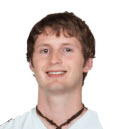First Language Influence on Written Second Language Complexity
1 View
Share this Video
- Publish Date:
- 18 October, 2022
- Category:
- Learning Languages
- Video License
- Standard License
- Imported From:
- Youtube
To use language like a native speaker requires the ability to connect and expand sentences with more sophisticated and complex syntactic structure (Housen, Kuiken & Vedder 2020). An emerging body of work has suggested that typological differences influence the development of L2 syntactic complexity (e.g., Kuiken & Vedder, 2019; Ströbel et al., 2020; Vercellotti, 2019). Examples of these typological differences between L1 and L2 include verbal and nominal complexity in a number of morphosyntactic constructions.
This study seeks to expand on this work and further probe the influence of the first language on the development of the second by examining the L2 Spanish of L1 Korean and L1 English speakers. The research questions include: Does the syntactic complexity of learners of the same proficiency level differ according to the L1? If so, how? This study contributes to the research base on syntactic complexity as an index of L2 development and responds to calls to expand study populations in L2 Spanish research beyond native English speakers (e.g., Long & Geeslin, 2018). Findings further suggest that differences in L2 Spanish development among L1 speakers of different languages should be considered when planning instruction.
Presenter
Raegeom Lee is a PhD student of Hispanic Linguistics in the Department of Spanish and Portuguese at the University of Minnesota. Her specialization is in Applied Linguistics and Second Language Acquisition (SLA). Specifically, she is very interested in the perception of verbal irony in advanced-level SLA.
This presentation is cosponsored by the Department of Spanish and Portuguese Studies in the College of Liberal Arts.













